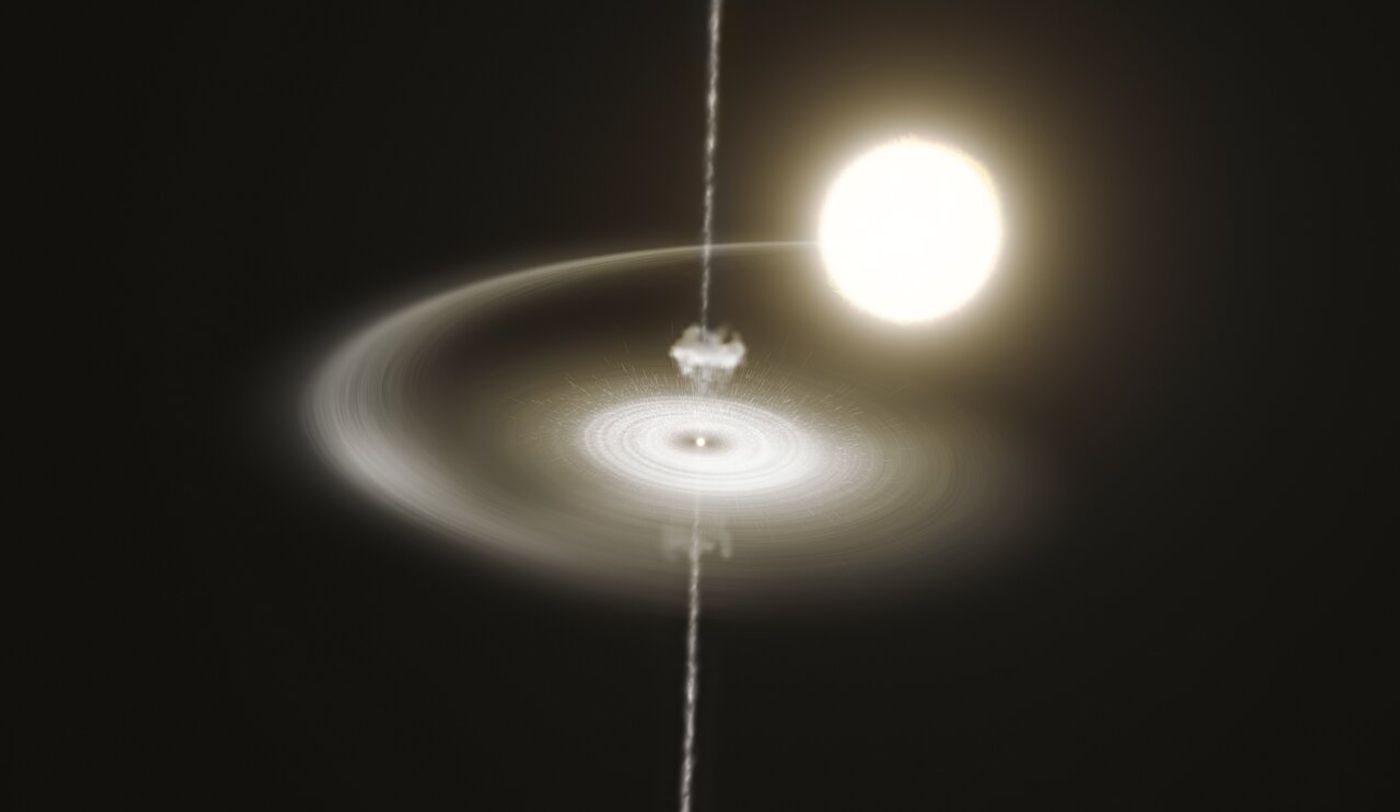Astronomers Uncover Pulsar's Mysterious Behavior Through Observational Campaign
A recent study published in Astronomy & Astrophysics examines the mysterious behavior of one of the most mysterious objects in the universe, a pulsar, which is a rapidly rotating neutron star that emits powerful pulses of radiation from its magnetic poles. This study was conducted by a massive scientific campaign using a combination of 12 ground- and space-based telescopes and holds the potential for scientists to better understand the evolution and behavior of pulsars throughout the cosmos.
While pulsars are known for acting like a cosmic lighthouse as it sweeps its radiation across the heavens, this recent study found a certain pulsar, PSR J1023+0038 (aka J1023), has been misbehaving contrary to traditional pulsar activities. For starters, J1023, which is located approximately 4,500 light-years from Earth, orbits close to another star, and has been observed actively stripping stellar material from this counterpart, resulting in the pulsar now exhibiting a disk of material around it.
However, it’s not the disk of material that has peaked the interests of astronomers, but the material the pulsar is periodically ejecting into space that has raised the most intrigue, which started occurring shortly after the disk of material began forming in what the team describes as two modes, a “high” mode, and a “low” mode. For the “high” mode, the pulsar emits several different wavelengths from the electromagnetic spectrum at high frequencies, including visible light, ultraviolet light, and bright X-rays. For the “low” mode, the pulsar emits these same wavelengths only at lower frequencies, plus radio waves.
Artist’s rendition of pulsar PSR J1023+0038 (aka J1023) consuming gaseous material from a nearby star. This material builds in a disc around J1023, gradually falls inward, and over time is ejected in a narrow jet. (Credit: ESO/M. Kornmesser)
“We have witnessed extraordinary cosmic events where enormous amounts of matter, similar to cosmic cannonballs, are launched into space within a very brief time span of tens of seconds from a small, dense celestial object rotating at incredibly high speeds,” said Dr. Maria Cristina Baglio, who is a researcher at New York University Abu Dhabi, which is affiliated with the Italian National Institute for Astrophysics (INAF), and lead author of the study.
According to the researchers, as the pulsar consumes material from the nearby star, the material gets ejected in a narrow stream of radiation perpendicular to the disk of material, which is considered the “low” mode. As this material gets closer to the pulsar, it gets struck by the wind blowing from the pulsar itself, which heats up the material, which activates the “high” mode.
While the team is confident that they’ve solved the mysterious behavior from J1023, more insights are required to learn more about this system, which the team hopes to use the vast number of telescopes at their disposal to accomplish. This includes telescopes from the European Southern Observatory (ESO), such as ESO’s Extremely Large Telescope in Chile, which is currently being built.
What new discoveries will astronomers make about pulsars and their strange behavior in the coming years and decades? Only time will tell, and this is why we science!
As always, keep doing science & keep looking up!
Sources: Astronomy & Astrophysics, EarthSky, European Space Agency, EurekAlert!, European Southern Observatory









